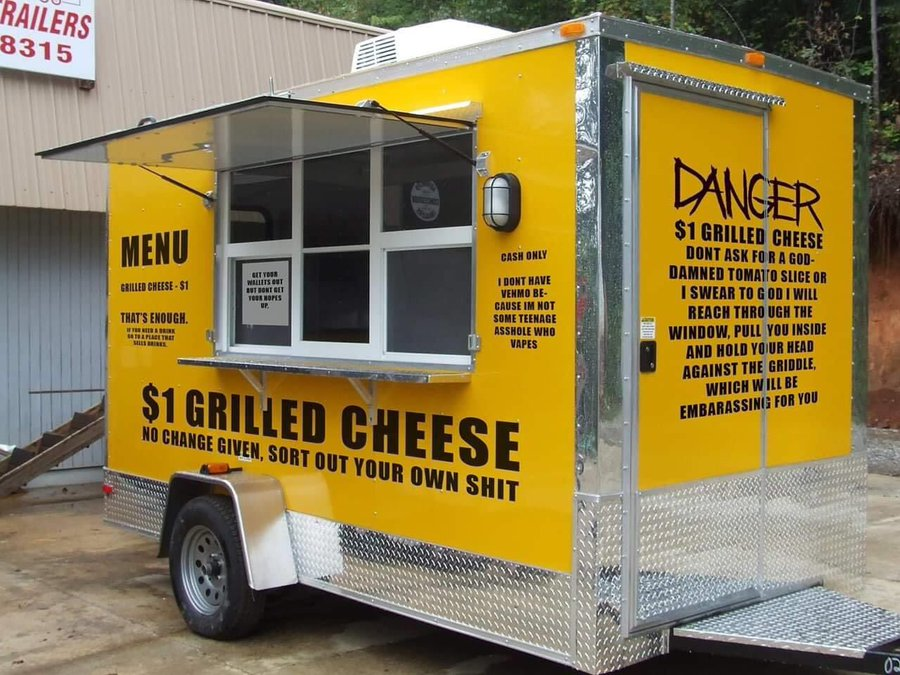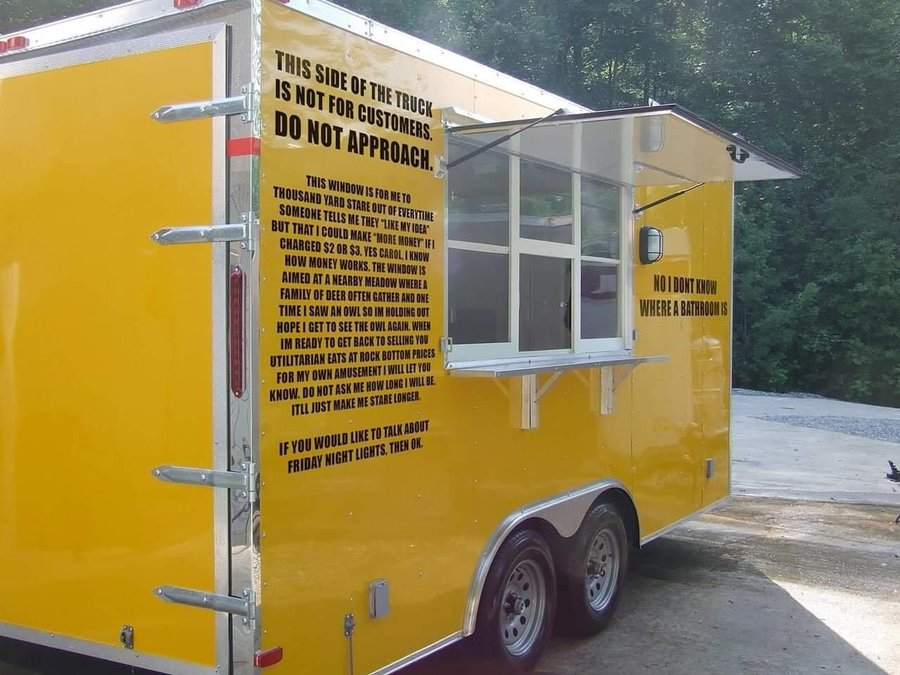Bronson – Keep Moving from SMUGGLER on Vimeo.No idea what this is about but it’s pretty fucking cool.
Category Archives: Business & Marketing
Will I still have a title?
More than half of my 40 working years were spent in and around small/medium market radio. It is with some confidence I say titles were important. Program Director, News Director, Music Director, even PSA (Public Service Announcement) Director! As with a lot of businesses, titles were often handed out instead of compensation.
We had other duties, of course. In addition to choosing which songs the station played, the Music Director also pulled an air shift and probably recorded commercials. Might even have written some. But these somewhat arbitrary divisions of responsibilities — and the titles that came with them — were important.
In the early 1980’s, the station I was working at was sold to a man named Jerrell A. Shepherd, a very successful operator of a group of small market stations in Missouri. Shepherd didn’t run his stations the way most small market stations did, in ways too numerous to mention here. But he did have a different approach to titles.
As the story goes, when Shepherd bought a station he would call the employees into his office, one at a time, and say something along the lines of:
“I’m afraid we are eliminating the position of News Director (or whatever your title happened to be).”
What?! How can he eliminate the position of News Director?! Shepherd would give this a minute or two to sink in before explaining, “I do have another position available if you’re interested.” You’re thinking: New baby on the way, car payments, buying a house…
“Uh, yeah, I’m interested. What is the job?”
“On the programming side of our stations there is only one position and that is Programmer. Would you like to hear about it?”
“Yes I would.”
“A Programmer does anything and everything necessary to put programming on the station. He (very few women in those days) pulls an air-shift, writes and records commercials, covers news stories, reports farm markets, does sponsored remote broadcasts from our advertisers locations, records the 8th Grade Spring Concert from one of the small towns in our listening area (assuming it has been sold).”
No more fiefdoms. No more specialists. No more “directors.” From a management standpoint you can see how much flexibility this added. All by the simple device of eliminating titles. Some people chose not to make this transition and moved on. Mr. Shepherd was fine with that.
This story came back to me as I listened to people talking about reorganizing police departments. Fire everyone and only hire back the “good” ones. Stop using cops for traffic law enforcement. And so forth.
I don’t know the answer but if Mr. Shepherd were still alive, I’ll bet he’d have some ideas.
$1 Grilled Cheese
Coffee shops post-Covid
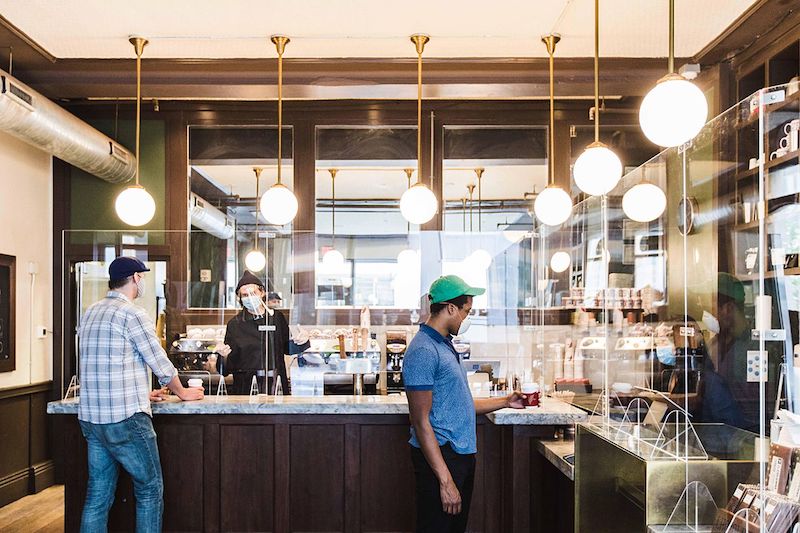
“La Colombe, a Philadelphia-based coffee chain, is taking pages out of the airport and pharmacy handbooks in retrofitting 30 of its cafes in six cities for safety. Customers line up outside, where a greeter takes orders at the door “to keep fingers off of touchscreens.” Once inside, patrons, who must wear masks, move through a line. Rather than use the ribbon tape that creates a maze at an airport check-in, La Colombe has installed acrylic panels to frame the lines. Customers must wait six feet apart, and may add food from the grab-and-go case while waiting in line. Inside seating is still prohibited by law.”
Source: The Philadelphia Inquirer
The Wish Book
People of a certain age remember flipping through the Sears Roebuck “mail order catalog.” A huge mother with not very good illustrations and descriptions of the products (no reviews). This memory floated back while browsing Amazon.
Kids called it the “wish book” because some of us got to flip through the toy section and pick things for Santa to bring us. That Santa had a relationship with Sears didn’t seem at all strange.
We could also find interesting stuff to covet in the back of magazines like Popular Mechanics and Popular Science. (“Allow four to six weeks for delivery”)
For immediate gratification, some cereal boxes included a “prize inside.” The better the prize, the worse the cereal.
Online grocery shopping
Online grocery shopping has been around for a while but I haven’t paid much attention. I have lots of time and tend to impulse-shop. But as I look for ways to avoid unnecessary exposure to crowds, I decided to give it a try.
Gerbes Supermarket (a Kroger brand) is about ten minutes from my house. You can shop via desktop browser or from a mobile app and they’ll deliver ($10) or you can schedule a time to pick up your order ($5). Looks like they’ll ship an order but I’m not sure that’s available locally.
I downloaded the iOS app and started shopping. Not the greatest UI I’ve ever seen but not bad. I found it a little confusing when updating my order but that might have been my lack of familiarity. I chose a pick-up window and they texted me reminders as well as notifications when one of the products I selected was out of stock.
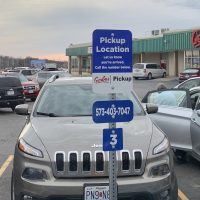 Our local store has three pick-up “stalls” (parking slots) with a phone number to let them know you’re waiting. A nice lady came out with my groceries and a list showing an item that was unavailable as well as a substitution (If I didn’t like it they’d take it back and adjust my credit card charge).
Our local store has three pick-up “stalls” (parking slots) with a phone number to let them know you’re waiting. A nice lady came out with my groceries and a list showing an item that was unavailable as well as a substitution (If I didn’t like it they’d take it back and adjust my credit card charge).
This seemed like a pretty good deal for five bucks. There will be times when I want to roam the aisles but for now, I’ll avoid the masses.
Advertising
“With advertising revenue being the significant contributor to Facebook’s success, the risk for Facebook lies in the possibility that users will get bored of its properties – or of its ads,” Littleton said.
Advertising has been a part of my life for as long as I can remember. My dad was in radio for 30+ years and I was in or around it for 40. And advertising paid the bills. In 1971 I was road-tripping across the country with a friend when the radio station we were listening to broke for a commercial. I remember thinking, “I could write a radio commercial.” A year later I started working at a small town station and —over the next dozen years— wrote and produced a shit load of commercials. In the 70s, in our little town, you could advertise in the daily newspaper, on the radio, or you could rent a billboard.
In the late 40’s and 50’s, small town radio was such a new thing that listeners were happy to listen to anything on the radio. Music, news, commercials… how cool is that?! Joe Bankhead tells this story well.
Did any/all of those ads “work?” Were they effective? Not sure I thought about it at the time. If we wanted to keep the station on the air, we had to sell ads. I’ve thought about advertising a lot in the ensuing years. We pointed out to advertisers that our ads were “intrusive.” A good thing. Before they could hear the next song or the rest of the newscast, they had to listen to the commercial(s).
Somewhere along the way music radio stations came up with the idea of “stop sets.” Instead of mixing “spots” in with the songs, they’d stop twice an hour and play as many as eight commercials in a row. Advertisers would pay a premium to be the first, or the last, in the set.
In those days a radio spot was either “price and item” or “image.” Those of us who wrote and produced the spots liked to do image ads because it gave us creative freedom. Small market radio guru Jerrell Shepherd insisted all spots on his stations be price-and-item because it was the only way the advertiser could know his ads were working. Someone would come in and ask about the lawnmower sale he heard on the radio.
Any time an advertiser would question whether or not the ads were working, we’d explain they were “branding” his business in the (subconscious) minds of listeners.
In traditional media (radio, TV, print) it was pretty easy to tell what was a commercial and what was programming/content. When the internet came along someone figured out it might be useful to make a paid commercial message look like the content on the page. Finally we knew for certain: people hated ads. They installed software to block them. They used their DVR’s to skip them.
Today, the best advertising doesn’t really look like advertising. I think Amazon has probably perfected the art. An Amazon product page includes images of the product; reviews; and recommendations of similar products in which you might be interested. And if you don’t like something you bought, no problem. Easy returns.
I’ll admit to being a little amazed anyone keeps buying ads. They must believe they work. And it’s difficult to imagine our “consumer economy” working without advertising. Despite my life-long dependence, I am advertising averse. It’s like your next door neighbors inviting you over for drinks only to spring an Amway pitch on you. Or that Jehovah’s Witness who interrupts your nap with a fistful of Watchtowers.
“How many more people have to die?”
What a closed rural hospital tells us about US healthcare

When I was growing up in Kennett, Missouri, in the ’50s and ’60s, the Dunklin County Memorial Hospital was… an institution. That’s where I had my tonsils removed and that’s where everybody went if you needed to be in the hospital. If you needed some kind of special treatment or care you probably went to one of the hospitals in Memphis, 100 miles away. The hospital closed last year, pushing the little town that much closer to… I’m not sure what.
“We’re having probably three to five more deaths a month without having the hospital here,” he said. “I had a 35-year-old patient who started having chest pain. He needed to get to an emergency room but died on the way to the hospital. There are multiple deaths due to not having emergency services, mostly from heart attacks and accidents. There’s nowhere to stabilise them. If they’re having a heart attack, they’re dying before they get to the hospital. Plus the infant mortality rate has increased since the hospital closed.”
It’s happening all over rural America. This article tells the story. As does RP.
UPDATE (5/15/20): Company announces plans to re-open hospital in Missouri’s poorest region. “Nine of the state’s ten poorest counties are in southeast Missouri, and the Bootheel is the state’s poorest region.”
The Golden Years
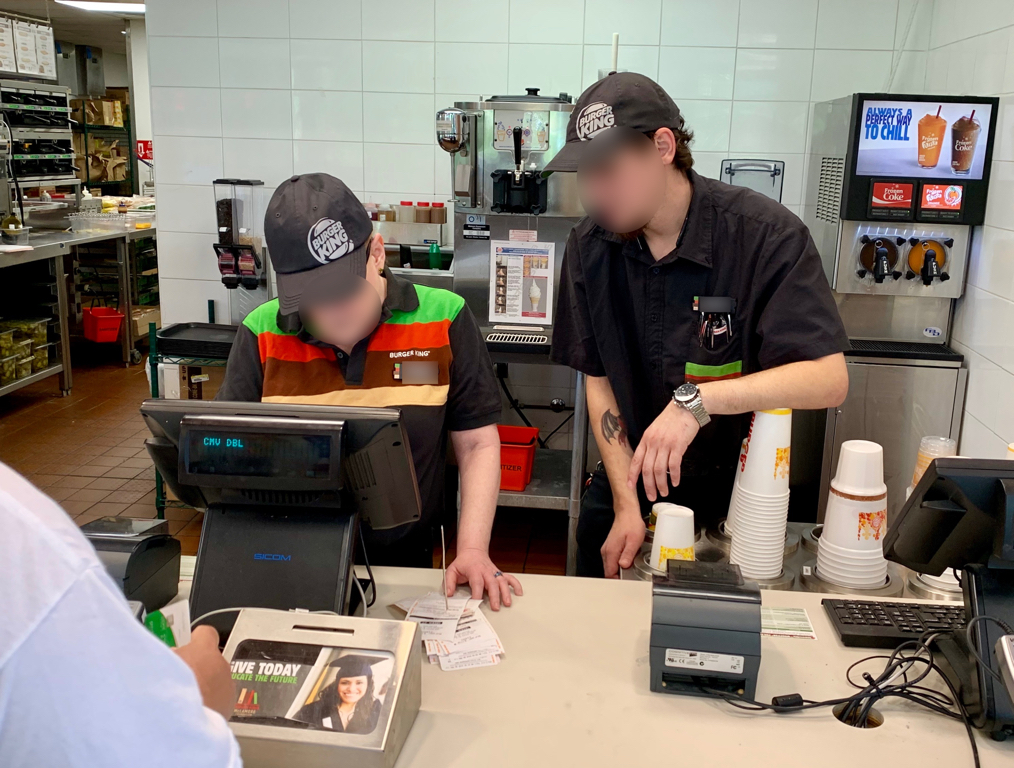
The Future of America is a pretty depressing headline but the alternative was “The Golden Years.” I should say up front I know nothing about these two people so everything that follows is baseless speculation. I took the photo standing in line at the local Burger King. The young (20-something?) man was showing the woman (60+) how to use the cash register. Let’s call them Opie and Aunt Bee.
A job “flipping burgers” long ago achieved cliche status and it’s nothing new to see a “senior citizen” behind the counter. As I watched the woman concentrate to figure out the register I couldn’t help thinking, “This woman is not doing this because she’s bored. She needs this job.” And she’s competing — to some extent — with people 40-50 years younger.
We’re told the jobs that built the American Middle Class in the previous century are gone or going away. Can there be enough fast food jobs (or their equivalent) for all of the young people with only a high school education and the growing army of seniors who didn’t save enough for retirement?
I didn’t see them at our local Burger King but McDonald’s has been replacing counter registers with self-serve kiosks. I’ve been thinking of “flipping burgers” as a job to be avoided but perhaps it will one day be a coveted gig.
Impossible Whopper
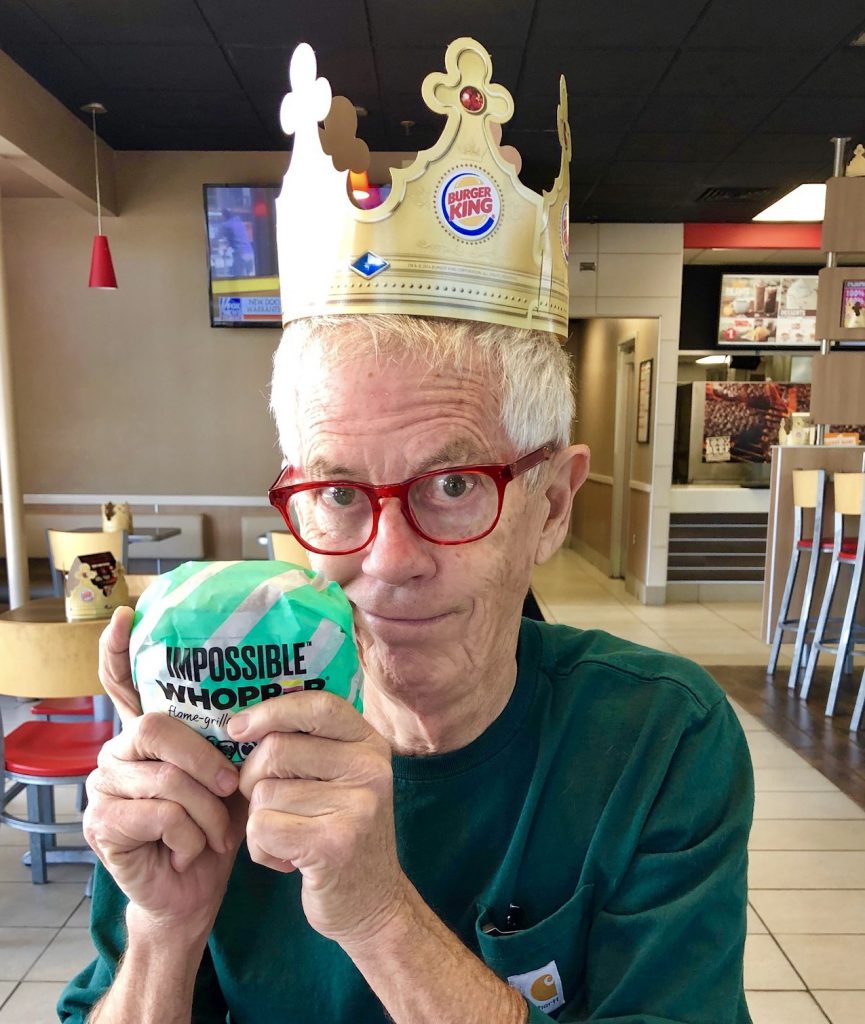 Burger King started serving the Impossible Whopper nationwide yesterday so my friend George and I drove to a nearby town to try one (our Burger King was destroyed by a tornado earlier this year but will re-open next month). I haven’t had a beef hamburger in six years so can’t say I remember what one tastes like but the sandwich BK served up was mighty close. I’ll be eating these a couple of times a week.
Burger King started serving the Impossible Whopper nationwide yesterday so my friend George and I drove to a nearby town to try one (our Burger King was destroyed by a tornado earlier this year but will re-open next month). I haven’t had a beef hamburger in six years so can’t say I remember what one tastes like but the sandwich BK served up was mighty close. I’ll be eating these a couple of times a week.

